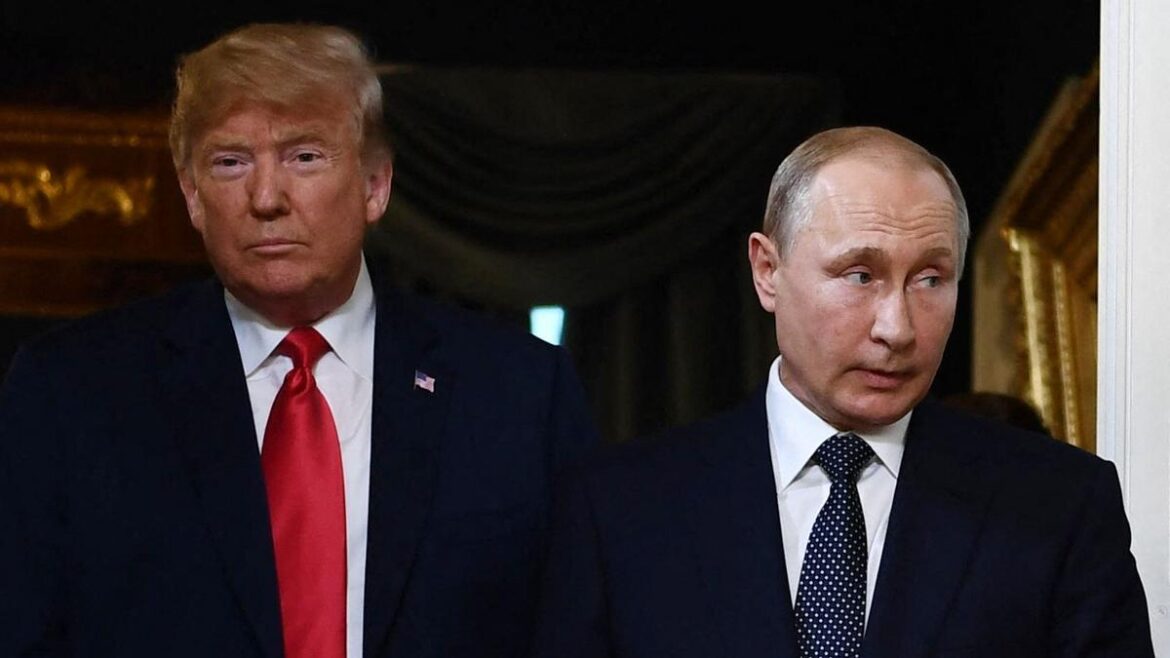Trump Issues 50-Day Ultimatum to Russia Over Ukraine Conflict
In a striking escalation of policy, former President Donald Trump has set a 50-day countdown for Russia to negotiate peace in Ukraine or face sweeping repercussions. During a press briefing at the White House alongside NATO Secretary General Mark Rutte, Trump signaled potential 100% tariffs and global sanctions targeting nations that continue to buy Russian oil and other exports. The announcement, delivered with characteristic directness, sent ripples through both geopolitical and financial circles.
“We’re going to be doing very severe tariffs if we don’t have a deal in 50 days — tariffs at about 100%,” Trump told reporters Monday. The remarks marked a stark departure from the current sanctions policy adopted by the West, which has largely allowed Russia to continue exporting oil to non-Western countries even as it wages a prolonged war in Ukraine.
Investor Reaction Sways Russian Markets
The Russian financial sector reacted swiftly. Following Trump’s comments, the rouble clawed back earlier losses and Moscow’s stock indexes notched small gains. Investors appeared to welcome the 50-day window as a chance to avoid harsher punishment, hoping back-channel negotiations could lead to a ceasefire or some form of diplomatic progress.
Timeline of Events
- Monday: Trump meets NATO Secretary General at the White House.
- Issues an ultimatum to Russia: negotiate peace in 50 days or face economic repercussions.
- Mentions the U.S. will likely initiate 100% tariffs on Russian exports.
- Hints that nations continuing to purchase Russian oil could be penalized via secondary sanctions.
Official Statements and Reactions
While Trump’s words were sharp, the strategy appears calculated. Commerce Secretary Howard Lutnick clarified that the administration is weighing multiple levers. “Sanctions and tariffs are both tools in his toolbox,” Lutnick said, adding, “You can do either one.” This leaves room for negotiation or reprioritization, depending on international feedback and Russia’s actions on the ground.
A White House official underscored the seriousness of the situation, stating that Russia could face both measures — harsh tariffs and secondary sanctions — if a ceasefire deal isn’t reached by early September.
What Changed?
For more than three years, Western countries have taken a cautious approach. While numerous companies pulled out of Russia and financial institutions suspended direct operations, most governments stopped short of exerting pressure on countries like China and India that import Russian oil. Moscow has used those channels to continue generating billions in revenue, cushioning the blow of earlier sanctions.
Trump’s proposal, by contrast, places indirect pressure not just on Russia but also on its trading partners. It’s a shift many experts didn’t see coming. If applied, secondary sanctions could impact global energy markets and redraw alliances.
Community and International Response
The international community is still digesting the implications. In some corners, there’s cautious optimism. A few diplomatic experts believe the grace period provides room for negotiation and possibly moves all parties toward a de-escalation. Others worry about the domino effect such a move could set off, especially in energy-dependent regions.
“It’s a bold move, but it could backfire if not carefully coordinated with allies,” said an unnamed European diplomat. “You can rock the boat, but you need to be sure it’s not sinking.”
Reaction from Ukraine has remained neutral so far. Some sources say Kyiv welcomes increased pressure on Moscow, but there’s wariness about promises that lack binding consensus from NATO or EU partners.
What’s at Stake?
Here’s what this ultimatum could mean for different players:
- Russia: Potential doubling of economic pressure. In addition to existing measures, Moscow faces the prospect of being cut off further from the global economy.
- China and India: Both countries have maintained ties with Russia for energy needs. Secondary sanctions could force them to reevaluate their trade approach.
- Europe: While not directly affected by new U.S. sanctions, European policymakers may face pressure to align with or respond to Trump’s moves.
- Global Markets: Volatility in energy prices and foreign exchange markets could return with force.
What’s Next?
The 50-day clock is now ticking. Analysts suggest early September as the deadline for Russia to move toward a ceasefire. Whether or not Russia responds to the potential blow depends on a number of variables — internal politics, military strategy, and the level of support from its main buyers.
Trump’s proposal, some argue, is as much about reshaping economic diplomacy as it is about ending an active war. By altering the framework through which sanctions affect not just a target country, but its partners, a wider web of accountability is being formed — or at least attempted.
Still, will any of this work? Maybe. Or maybe not. The history of economic sanctions is full of half-successes and unintended consequences. Pressure doesn’t always lead to peace. Sometimes it just shifts the battle lines.
For now, the world waits and watches as the September deadline approaches. Whether this is a turning point or merely another round in a long war, nobody can say for sure. But the message is clear enough: there are new rules on the table, and they might soon be enforced.

